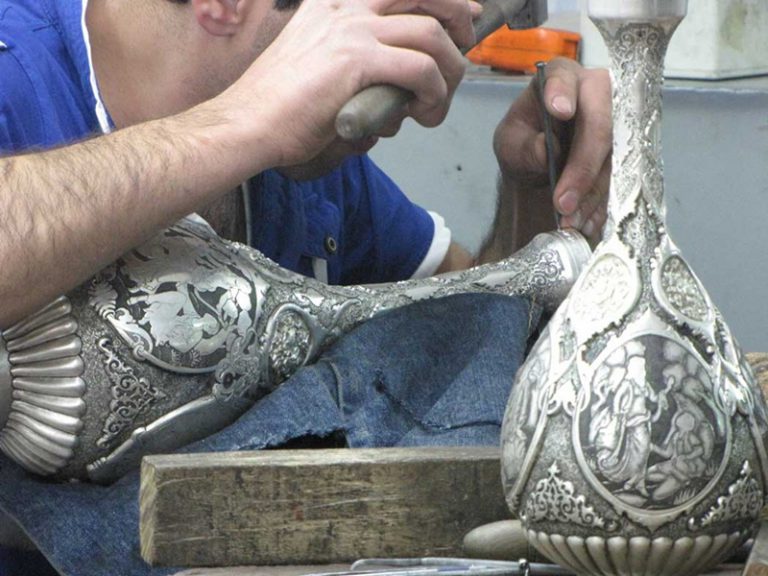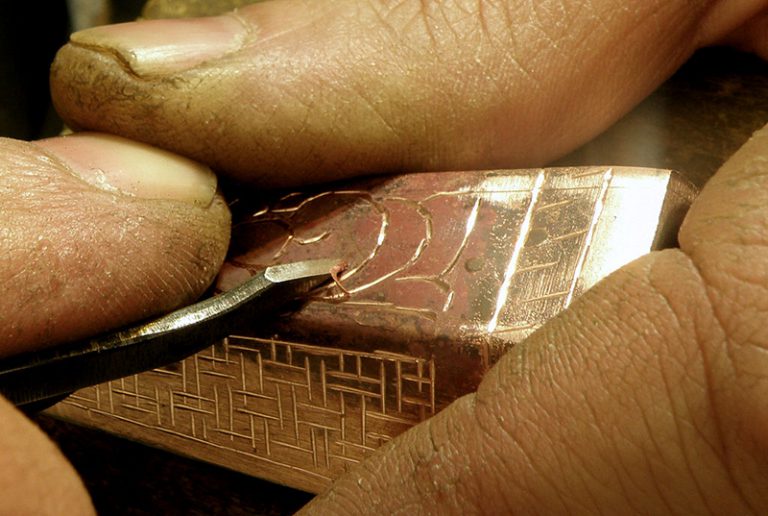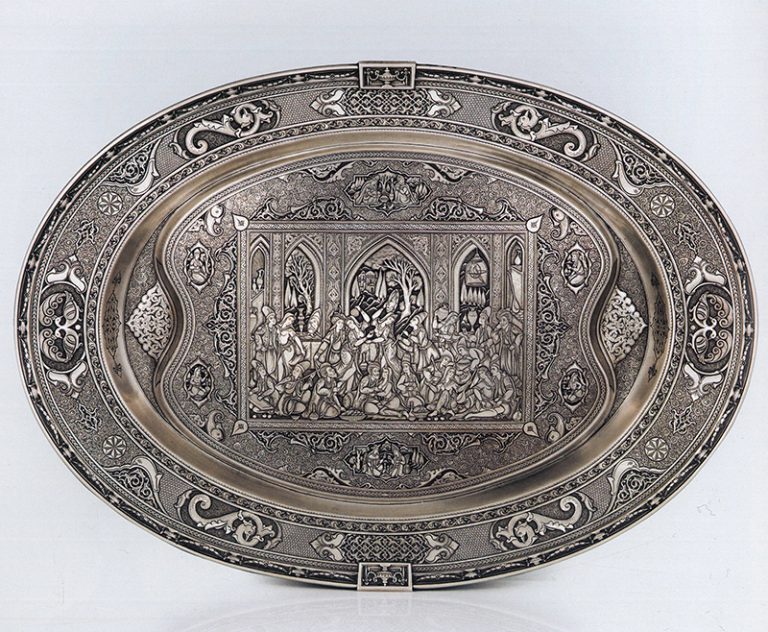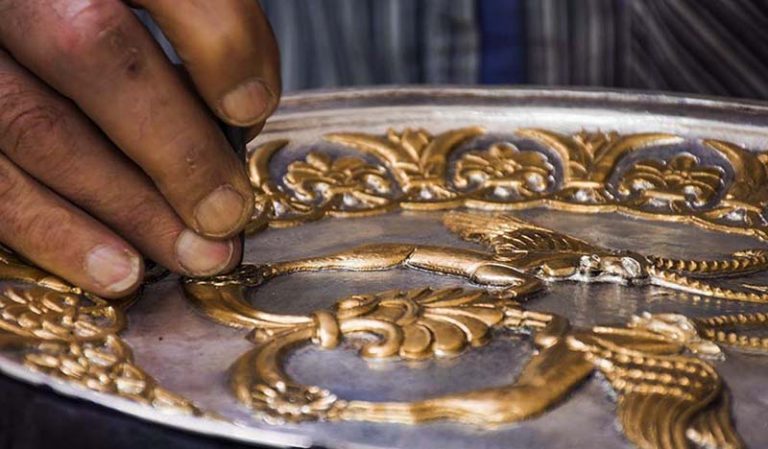Metal Engraving (Qalamzani in Persian) has a long history in Iran and is one of the traditional arts of the country. This art is in the category of metal handicrafts.
We can see the history of engraving on the mountains, old palaces of kings and historical monuments. Later this art named stone carving, then it used on the metal and named Metal Engraving. Later some motifs have been carved on the gemstones specially agate.
Currently, some other metals like gold, silver, copper, brass and steel are used in this art. Metal Engraving is the art of carving different delicate designs and motifs on the metal objects by a metal engraving pen or hammer.
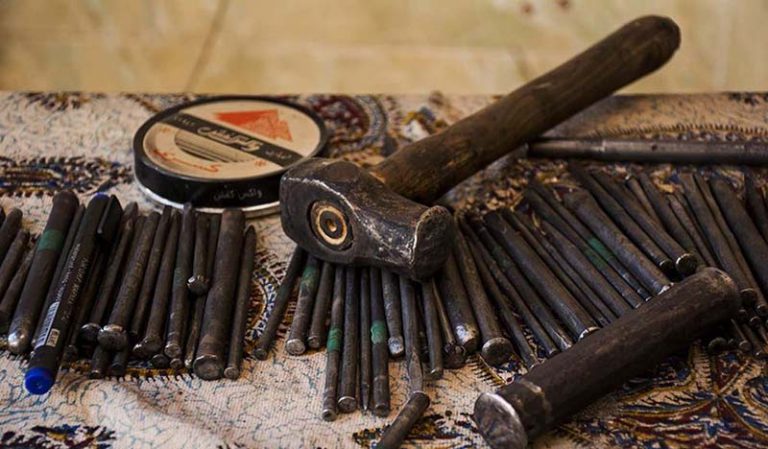
In metal engraving, first the inside or back side of the object is filled with solution of coal tar and plaster to reduce the noise of the hammer and prevent the perforation of metal during operation. Then the desired motif is drawn on the object, after selecting the appropriate pen, the artist places the pen on the object and hammers at the end of the pen to make furrows and motifs on the object by changing the intensity of hammering. After creating the motifs, the coal tar is removed and the furrows are filled with coal; then the object is covered with black polished oil. As a result the engraved motifs appear in the form of dark lines.
Two main styles in the Iranian metal engraving is Tabriz style and Isfahan style. In Tabriz style, the artist engraves on the object by moving his/her wrist but in Isfahan style, the engraving work is done by hammer strike. Because of that, Tabriz metal engraving is smooth and shallow but Isfahan motifs are deeper.
